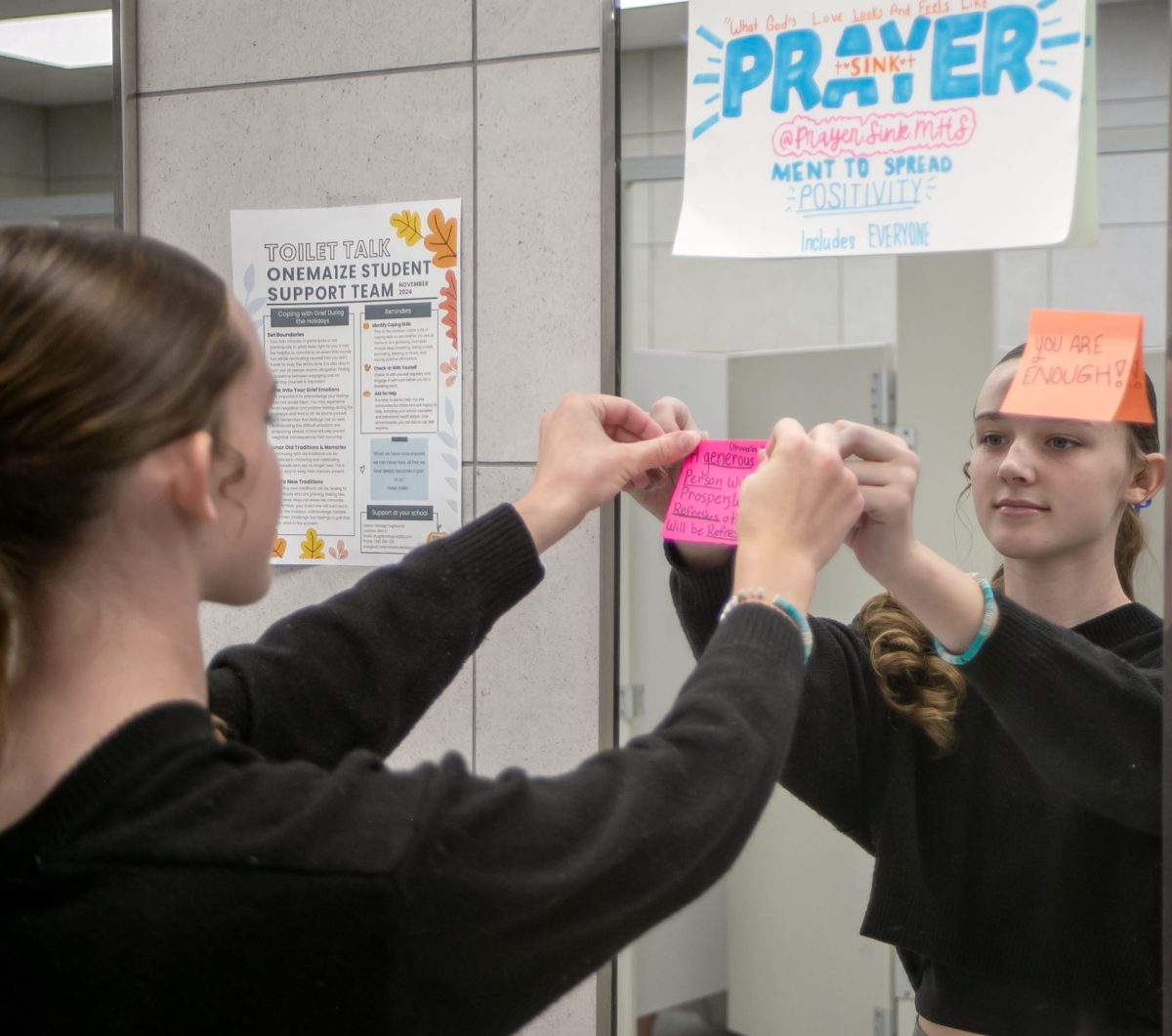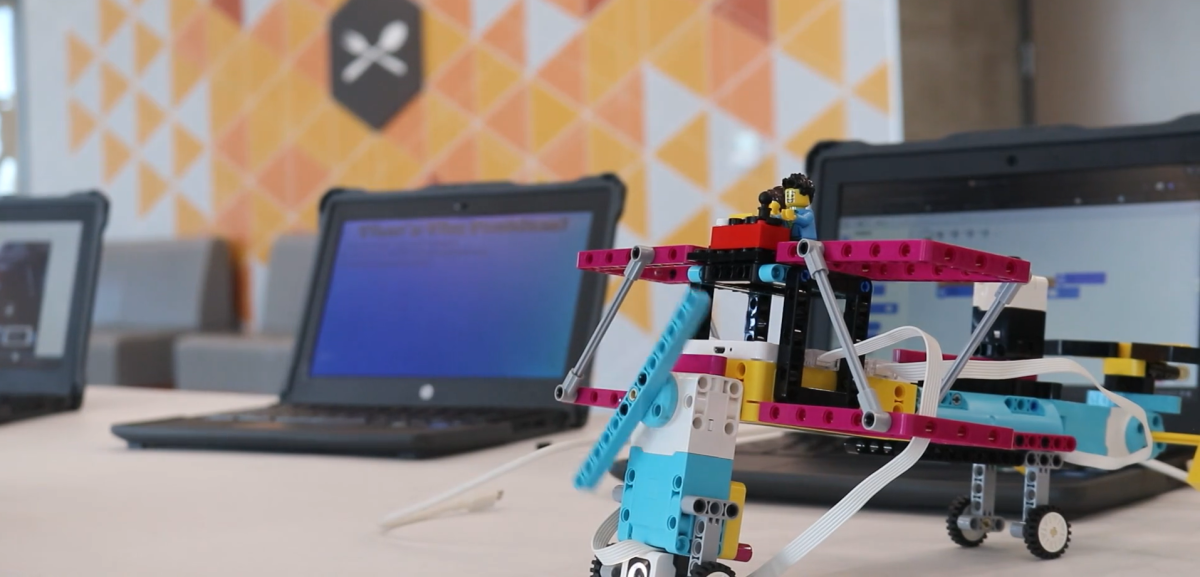End the fight
The decision to go all red at graduation is correct, now it’s time to move on
The district made the decision to switch to all red gowns this week for reasons of inclusion and uniformity. This became a topic of hot debate on social media.
September 18, 2019
For whatever reason, there are some people that are born leaders. Maybe they have an enigmatic voice, maybe they can construct an argument well, maybe they are just good people. No matter the reason, there are some people that simply know how to capture a crowd’s attention, to lead a group into battle for whatever cause.
Just because you are a leader, however, doesn’t necessarily mean you are leading for the right causes.
“Leadership can be positive or negative,” principal Chris Botts said in an interview for an upcoming story. “We have seen leaders who led in a way that isn’t productive for the betterment of our school.”
If you go to Maize, you probably already know that the headline from Friday night’s football game wasn’t about the school’s victory, nor was it about the numerous war veterans that were welcomed into our stadium.
A chant was started in our student section Friday night regarding a decision to remove white gowns from graduation and switch to all red, seemingly for uniformity and inclusion.
“Fight for your right to wear red and white,” students chanted. The display was then posted to social media as a “message for admin.”
Many Maize students, past and present alike, took to Twitter to defend the decision to remove the gowns. Uniformity, they argued, would remove the need for those in the LGBT community to have to choose a color conforming with their gender.
Gown purists, however, posited that the “tradition” of white gowns outweighed any ground gained. “Imagine making everyone suffer just for a few people’s misfortune,” one Tweet read. “I’m sorry that one transgender person had to ruin it for the rest of us,” another said. These were far from the only Tweets in this tone.
Many of the students shown in a video from the game have come out saying that they had no clue what the chant was actually about. Some have said they thought “red and white” referred to the USA theme of the game, while others said they didn’t know the potential benefits and reasons for the change: they simply joined in for harmless fun.
There were still people who led the chant, however, knowing full well the impact it would have. There were still those who published the display to their socials with messages deliberately against our administration. There are still those that held the reins of the chant, knowing all sides of the situation, and chose to make their voice heard in a negative way.
Tuesday, the district’s decision was announced to seniors. White gowns are officially no more.
Were the argument to be first presented in a calm, rational way, there very well could have been room for the ruling to be changed or elaborated upon. Once the situation was brought to Twitter, however, the arguments in favor of the change were clearly too pressing for the district to step down. Ironically, those arguing for white gowns may have sealed their fate in trying to bring them back.
This is not an editorial meant to condemn the students who made these posts. That conversation has long since been hashed out on social media, and, at this point, those accountable aren’t going to budge whether an editorial is written or not. In a sense, it’s sort of the opposite.
There is no argument that the display at the game wasn’t wrong. The want for a white gown should in no way outweigh a group of people’s comfort. Tradition is no justification for something unjust. Sometimes, things need to change.
We at Play had a lengthy discussion over the disturbing nature of the scene. It was disrespectful, it was irrational, and it entirely lacked compassion.
Social media was a madhouse. A school turned against itself. Instigators called other students mentally ill. Responders sent death threats to those instigators. Graduates said they were disappointed to have gone here in the first place. At a certain point, one has to ask: Where’s the line?
What started as a small group of people leading an unknowing crowd in an ignorant chant quickly became associated with our school. The vocal minority became portrayed as the majority. Fires were fueled until what would’ve been three opinions fizzling out in the day became the new “face of Maize.”
Of course you should speak out against something you find wrong. These students needed to be told they were incorrect. But at a certain point, the back and forth must stop.
Anyone could have told you the decision wouldn’t be reversed long before Tuesday. Anyone could have told you that those who vigorously opposed the change weren’t going to suddenly stop. Yet still, the fight continued. Just as the fate of the gowns was sealed by those who opposed them, the opinion of this minority was popularized by those who fought them.
Everyone has the potential to lead. Anyone can step up to the plate and take a stand. Anyone can be an example for others. But just as it is our job as leaders to make sure that example is positive, one of compassion, it also is our job as leaders to be compassionate to those we disagree with all the same.
Maize failed last weekend. There is no light way to put it. We allowed the small drop of a negative opinion grow into a flood that sullied our school’s good name.
But just because we failed doesn’t mean we’re failures. Last weekend was full of grief and heartache for students and administrators alike, but that doesn’t have to be done in vain. The good name of Maize is not gone.
We all have a choice. We can let a fight continue, going back and forth, an eye for an eye, until we are surrounded by a sea of negative voices on all sides.
Or we can state our opinion, in public or private, and get out the door. We can do what we think is right without needing to do something wrong.
There are always going to be bullies out there. By no means are we suggesting that you shouldn’t stand up for what is just. But we need to keep in mind what is important. We can’t drag ourselves down by trying to drag others.
Maybe the biggest part of being a leader is setting a good example, whether people see it or not. So at the end of the day, we need to ask ourselves: Is a good comeback really worth inciting more maliciousness?
We’ve heard the fight for the right to wear red and white. We’ve seen the fight against it. Now, it’s time to end the fight.







Jonie Miller • Sep 22, 2019 at 9:32 pm
We’ve sent a letter to the superintendent. I’m telling you to pull this bias “news piece” Gossip Letter.
Preston Hunt • Sep 19, 2019 at 1:55 pm
Good Job Case-Dog
Tommy Salami • Sep 19, 2019 at 7:44 am
That was so biased.